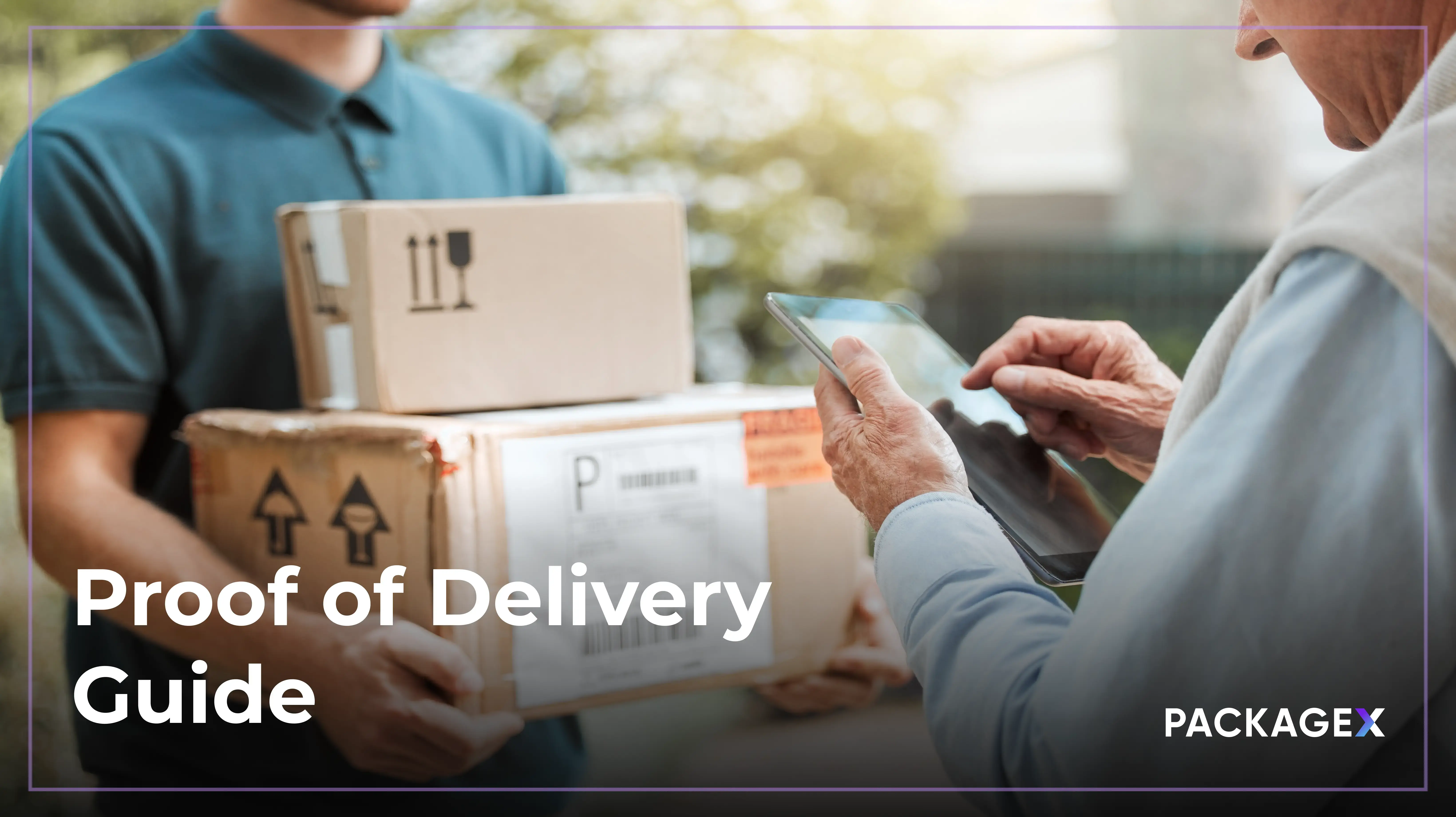Market analysts project that the omnichannel retail sector will grow from $10.13 billion in 2025 to more than $25 billion by 2032, reflecting a compound annual growth rate of 14%. These statistics reflect a significant shift in shopper behavior and rising expectations across every stage of the buying journey.
Consumers today expect a consistent experience whether they’re shopping online, in a store, or on a mobile app.
At the same time, retailers now place a significant value on cultivating lasting relationships. Consumers are selecting companies that offer dependable, flexible, and quick order fulfillment from the point of sale to the point of delivery.
It is crucial for contemporary retail stores to get this correctly. Customer loyalty and retention are more crucial than ever as the cost of acquiring new clients keeps rising. The difference between one-time customers and devoted brand supporters can be determined by an effective omnichannel e-commerce fulfillment strategy backed by astute e-commerce automation.
In this article, we'll explain what omnichannel fulfillment actually is and how companies can utilize it to improve their logistics operations.
What Is Omnichannel Fulfillment?
Omnichannel fulfillment is a retail strategy that integrates multiple sales and fulfillment channels, including online stores, marketplaces, and physical locations, into a single, unified system. Unlike multichannel fulfillment, where each channel operates in silos, omnichannel fulfillment breaks down those walls. It gives businesses real-time visibility into inventory control, enabling smarter order management and faster delivery.
For example, if a customer orders online, the item doesn’t have to ship from a distant warehouse, it could come from a nearby store or micro-fulfillment center.
By syncing sales platforms with omnichannel fulfillment solutions, brands gain tighter control over stock levels, smoother logistics coordination, and a more consistent shopping experience.
Why It Matters: Core Benefits for Brands
An effective omnichannel fulfillment strategy delivers measurable advantages for modern retail operations. It enhances both customer satisfaction and backend efficiency. Key benefits include:
- Consistent Customer Experience:
Omnichannel fulfillment ensures smooth transitions across digital and physical channels. Customers receive the same level of service, regardless of how or where they shop. - Improved Delivery Speed and Accuracy:
Orders are fulfilled from the closest available location, which reduces shipping times and improves fulfillment accuracy. - Real-Time Inventory Monitoring:
A centralized inventory management system provides real-time visibility across all stock locations. This supports better forecasting and reduces the risk of overstock or stockouts. - Streamlined Order Management:
An integrated order management system helps track, process, and fulfill orders efficiently across multiple channels. - Optimized Warehouse Management:
Coordinated workflows improve warehouse management by reducing manual errors and enhancing inventory handling.
Brands that implement omnichannel fulfillment gain stronger control, improved agility, and long-term competitive advantage.
Types of Omnichannel Fulfillment Models
Choosing the right fulfillment approach is central to building an effective omnichannel order fulfillment strategy. The goal is to meet customer expectations with speed, accuracy, and convenience, while maintaining lean and adaptable operations.
Here are five common models reshaping omnichannel retail fulfillment:
BOPIS (Buy Online, Pickup In Store):
This model bridges online and offline retail by letting customers place orders online and collect them at a nearby store. It reduces shipping costs, accelerates delivery, and enhances in-store inventory turnover. For businesses, it’s also a powerful way to increase upsells during pickup.
Ship-from-Store:
Retailers use their brick-and-mortar stores as fulfillment centers, leveraging existing inventory to fulfill online orders. This reduces the burden on centralized warehouses and shortens delivery timelines. With the right inventory control and tracking systems, ship-from-store improves agility and reduces stockouts.
Curbside Pickup:
An evolution of BOPIS, curbside pickup allows customers to stay in their cars while collecting orders. This method became common during the pandemic and remains relevant due to its convenience. Retailers benefit from reduced congestion inside stores and faster handoffs.
Dark Stores:
These are retail locations converted into dedicated fulfillment centers, closed to the public but optimized for pick-and-pack fulfillment. Dark stores offer localized delivery while helping reduce backorders by better allocating inventory where it’s needed most.
Smart Lockers / Local Hubs:
Automated lockers or third-party hubs serve as pickup points for customers, especially in high-traffic areas. They reduce last-mile delivery costs and provide reliable delivery even during order surges. This model aligns closely with the growing third-party logistics industry and supports scalable omnichannel order fulfillment.
Whether you manage fulfillment in-house or partner with 3PL providers, these models provide flexible, customer-first solutions.
How to Build a Winning Omnichannel Strategy?
Creating a successful omnichannel fulfillment strategy starts with a clear roadmap. Most high-performing retailers follow a four-phase approach:
Assess, Integrate, Automate, and Optimize.
Assess Your Current Fulfillment Capabilities:
Start with a full audit of your operations. Identify inefficiencies in your order management system, data silos, and gaps in inventory workflows. This phase sets the foundation for a responsive omnichannel fulfillment strategy.
Integrate Systems Across Channels:
Next, unify your sales channels, warehouses, and delivery partners. Integration ensures a consistent experience across platforms and improves collaboration. It’s also essential for syncing your WMS system, customer data, and fulfillment operations.
Automate with the Right Tools:
Use ecommerce automation platforms and a scalable omnichannel fulfillment software to reduce manual processes, improve inventory accuracy, and speed up order processing. Automation enables your business to grow without sacrificing performance.
Optimize with Real-Time Visibility:
The final step is optimization. With connected data and analytics, you can adjust inventory levels, manage returns efficiently, and improve delivery timelines. Real-time insights drive smarter decisions and help you meet customer expectations.
A strong omnichannel strategy, backed by modern logistics planning services, enables flexibility, lowers costs, and enhances customer satisfaction, regardless of where the order originates or is fulfilled.
Benefits of Omnichannel Fulfillment
Here’s how adopting omnichannel fulfillment transforms your retail strategy:
1. Unified Inventory Across All Channels
A real-time inventory management system gives your teams and customers an accurate view of stock, whether it’s in a warehouse, storefront, or in transit.
- Better stock accuracy
- Fewer oversells or missed sales
- Faster order routing based on location
2. Smarter Fulfillment from Every Location
With omnichannel systems in place, stores turn into micro-fulfillment centers. Orders can be picked, packed, and shipped from the closest possible location.
- Reduced shipping costs
- Faster delivery and pickup options
- Higher efficiency with micro-tasking tools
3. Delivery Options That Match Shopper Expectations
Today’s customers want options, including BOPIS (Buy Online, Pick Up In Store), curbside pickup, same-day delivery, or standard shipping. Omnichannel fulfillment lets you offer all of them, personalized to the shopper’s location.
- Higher conversion rates
- Stronger customer trust
- Location-based delivery promotions
4. Consistent Communication
Omnichannel fulfillment makes communication seamless. It allows you to manage all post-purchase updates in one seamless flow.
- Fewer customer service calls
- Improved last-mile satisfaction
- Brand trust through transparency
5. Scalable API-Ready Systems
Modern fulfillment is built on flexible tech. API-powered logistic systems connect your order management, inventory, and shipping tools without rebuilding everything from scratch.
- Faster integrations
- Easier scaling across regions
- Reduced IT overhead
Key Challenges and How to Solve Them
Top Challenges in Omnichannel Fulfillment
Omnichannel fulfillment brings complexity. Here are some of the most common issues businesses face:
- Siloed data across systems
- Fulfillment delays due to poor coordination
- Inaccurate inventory sync across channels
- Rising backorders and lost sales
- Slow inventory turnover
- Build-up of deadstock
Each of these problems can affect customer satisfaction, increase costs, and reduce operational efficiency.
How to Solve Them
Modern problems need smarter solutions. By adopting automation and using centralized systems like a warehouse management system (WMS) and an order management system, teams can unify their operations. Strong inventory control ensures that all sales and fulfillment channels are updated in real-time. Predictive analytics further helps with inventory optimization, improving stock accuracy, and reducing delays.
Key Concepts to Understand
To improve fulfillment performance, it’s essential to understand a few foundational terms.
Inventory turnover reflects how quickly stock is sold and replenished. A healthy turnover rate indicates strong demand and efficient inventory flow. If the turnover is too low, it may signal excess deadstock, unsold items that consume warehouse space and tie up working capital.
Another critical concept is backorder. When demand exceeds available inventory, items are placed on backorder, resulting in delayed deliveries and disappointed customers. Understanding the backorder meaning helps businesses manage expectations and improve planning across all fulfillment channels.
Future of Omnichannel Fulfillment
The future of omnichannel fulfillment lies in smarter and more predictive systems. With AI-powered inventory forecasting, retailers can anticipate demand shifts and avoid overstocking or deadstock. At the same time, real-time delivery tracking and smart fulfillment centers are helping brands stay agile and customer-focused.
Metrics such as the inventory turnover ratio and understanding the inventory turnover formula are becoming essential for measuring operational efficiency. As expectations grow, businesses are transitioning to proactive fulfillment models, utilizing micro-warehousing and automation to expedite last-mile delivery.
Tools like omnichannel fulfillment software are evolving to meet these needs, connecting inventory data, orders, and customer insights across platforms. As the third-party logistics industry adapts, those who embrace this transformation will lead in service and scale.
How PackageX Powers Omnichannel Fulfillment Success
PackageX helps ecommerce brands, retailers, and 3PLs simplify fulfillment across channels. With unified inventory control, a scalable WMS, and ecommerce automation built in, the platform delivers real-time visibility without the need for complex integrations.
Here’s how PackageX supports omnichannel fulfillment:
- Real-time visibility with a scalable and cloud-based WMS system.
- Smart order management system that syncs across online and in-store channels.
- Automated returns, tracking, and delivery updates using flexible logistics APIs.
- Seamless inventory coordination across locations and platforms.
- Works out of the box, with no need for custom setups or IT overhead.
With fast deployment and API-first flexibility, PackageX supports growing businesses with end-to-end omnichannel fulfillment solutions.
FAQs
What are the 4 pillars of omnichannel?
The four pillars of omnichannel fulfillment are consistency, convenience, coordination, and communication. These elements ensure a seamless customer experience across sales and fulfillment channels. Together, they support effective order management, inventory accuracy, and brand loyalty.
What are the 4 C's of omnichannel?
The 4 C’s are customer, content, context, and commerce. They guide successful omnichannel ecommerce fulfillment. They help brands deliver the right message, at the right time, through the right channel. This approach strengthens inventory control and personalizes the buyer journey.
What is an example of an omnichannel?
A common omnichannel fulfillment example is Buy Online, Pick Up In Store (BOPIS). It connects ecommerce with physical retail, using synced order management systems and real-time inventory visibility. This model enhances speed, convenience, and customer satisfaction.






